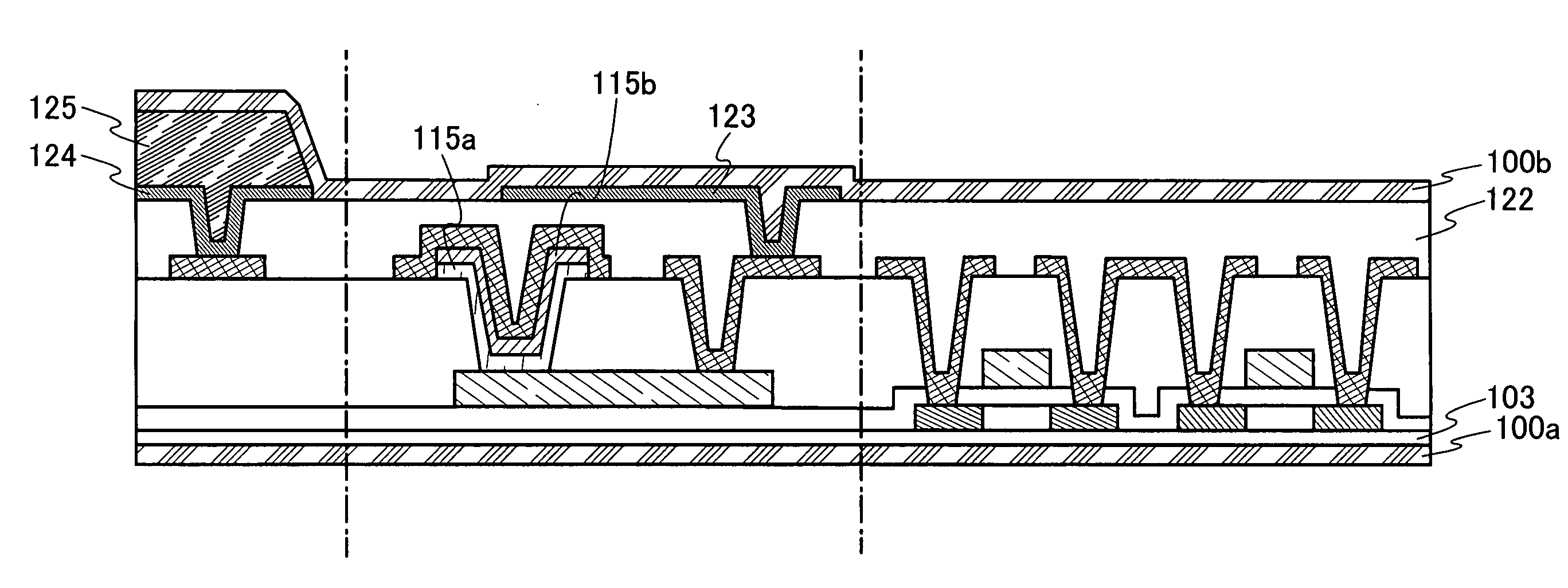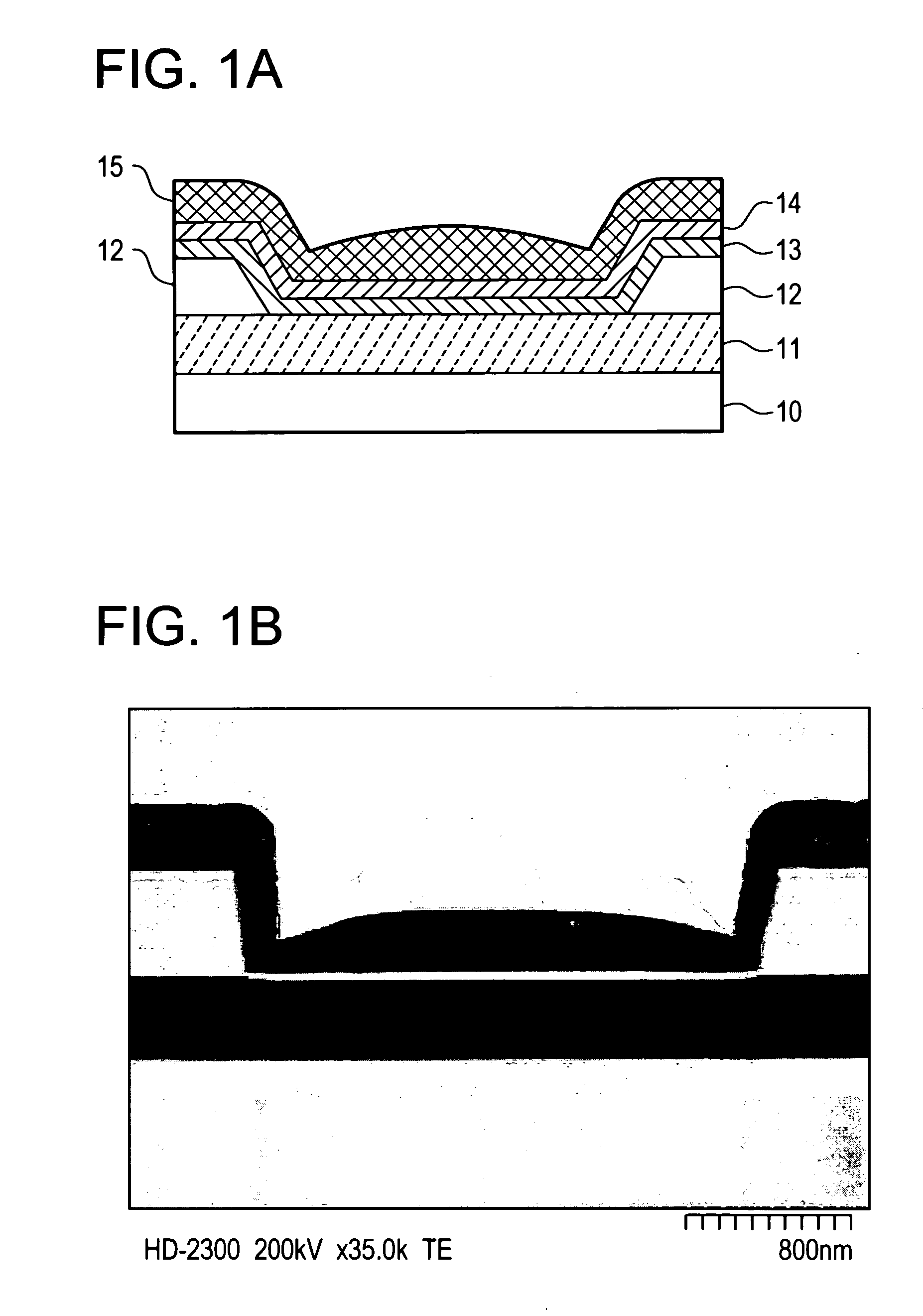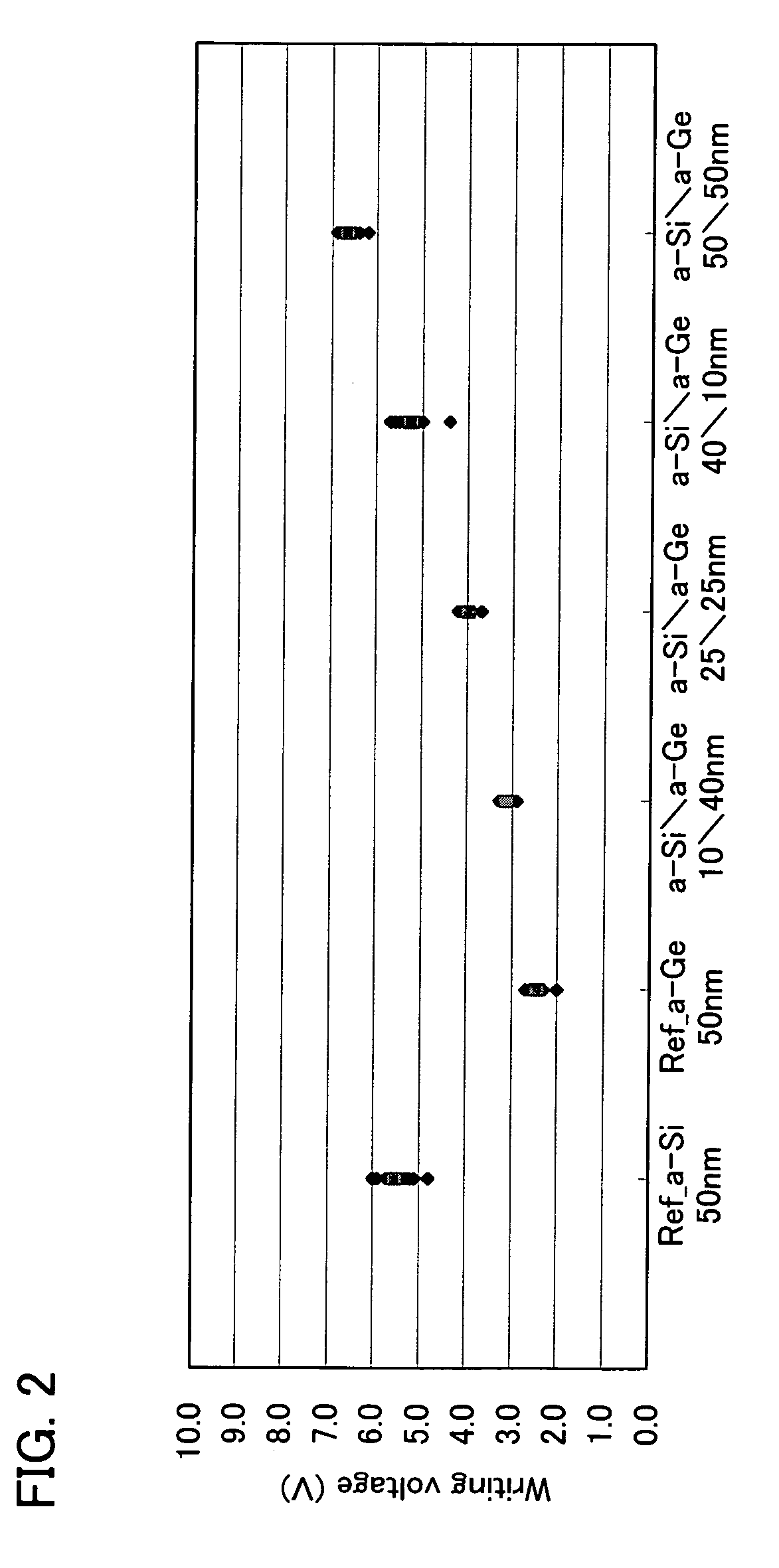Semiconductor device and manufacturing method thereof
a semiconductor and semiconductor technology, applied in the direction of semiconductor devices, electrical devices, transistors, etc., can solve the problems of increasing the mounting cost of the silicon chip, the inability to reduce the unit cost of the wireless chip, and the inability to meet the requirements of the unit cost of the wireless chip, so as to reduce the variation of writing voltage among a plurality of memories and reduce the unit cost of the chip
- Summary
- Abstract
- Description
- Claims
- Application Information
AI Technical Summary
Benefits of technology
Problems solved by technology
Method used
Image
Examples
embodiment mode 1
[0062]FIG. 1A shows a cross-sectional schematic view of an antifuse-type ROM of the present invention.
[0063]As an example is shown in FIG. 1A, the antifuse-type ROM of the present invention has a structure in which a first electrode 11 is formed over a substrate 10 having an insulating surface, and a silicon film 13, a germanium film 14, and a second electrode 15 are sequentially stacked over the first electrode 11.
[0064]These electrodes are short-circuited by voltage application between the first electrode 11 and the second electrode 15, whereby data is written to a memory element.
[0065]As materials of the first electrode 11 and the second electrode 15, a single substance of tungsten (W), titanium (Ti), nickel (Ni), chromium (Cr), molybdenum (Mo), tantalum (Ta), cobalt (Co), zirconium (Zr), vanadium (V), palladium (Pd), hafnium (Hf), platinum (Pt), iron (Fe), or the like, or an alloy or a compound thereof is used to form a conductive film by a sputtering method, which may be proces...
embodiment mode 2
[0080]A manufacturing process of a semiconductor device of the present invention will be described with reference to FIGS. 4A and 4B. A cross-sectional structure shown in FIG. 4A is a process diagram in the middle of manufacturing process of the semiconductor device.
[0081]First, a separation layer 102 and an insulating layer 103 are formed over a substrate 101 having an insulating surface. A quartz substrate, a glass substrate, or the like can be used as the substrate 101 having an insulating surface. In particular, a glass substrate which can have a large area of over 1 m on each side is suitable for mass production. A tungsten film having a thickness of 50 to 200 nm is used as the separation layer 102, and a silicon oxide film is used as the insulating layer 103. Note that the separation layer 102 is not limited to a tungsten film, and a tungsten nitride film, a molybdenum film, an amorphous silicon film, or the like may be used. In addition, the insulating layer 103 is not limite...
embodiment 1
[0122]In this embodiment, a manufacturing method of a wireless chip including an active matrix antifuse-type ROM will be described below with reference to FIGS. 6A to 6D and FIGS. 7A to 7C.
[0123]First, a metal layer 502 which serves as a separation layer is formed over a substrate 501. A glass substrate is used as the substrate 501. A tungsten film, a tungsten nitride film, or a molybdenum film having a thickness of 30 to 200 nm which is obtained by a sputtering method is used for the metal layer 502.
[0124]Next, a surface of the metal layer 502 is oxidized to form a metal oxide layer (not shown). The metal oxide layer may be formed by oxidation of the surface with pure water or ozone water, or oxidation with oxygen plasma. Alternatively, the metal oxide layer may be formed by heating in an atmosphere containing oxygen. Further alternatively, the metal oxide layer may be formed in a later step of forming an insulating film. In this case, when a silicon oxide film or a silicon oxynitr...
PUM
 Login to View More
Login to View More Abstract
Description
Claims
Application Information
 Login to View More
Login to View More - R&D
- Intellectual Property
- Life Sciences
- Materials
- Tech Scout
- Unparalleled Data Quality
- Higher Quality Content
- 60% Fewer Hallucinations
Browse by: Latest US Patents, China's latest patents, Technical Efficacy Thesaurus, Application Domain, Technology Topic, Popular Technical Reports.
© 2025 PatSnap. All rights reserved.Legal|Privacy policy|Modern Slavery Act Transparency Statement|Sitemap|About US| Contact US: help@patsnap.com



